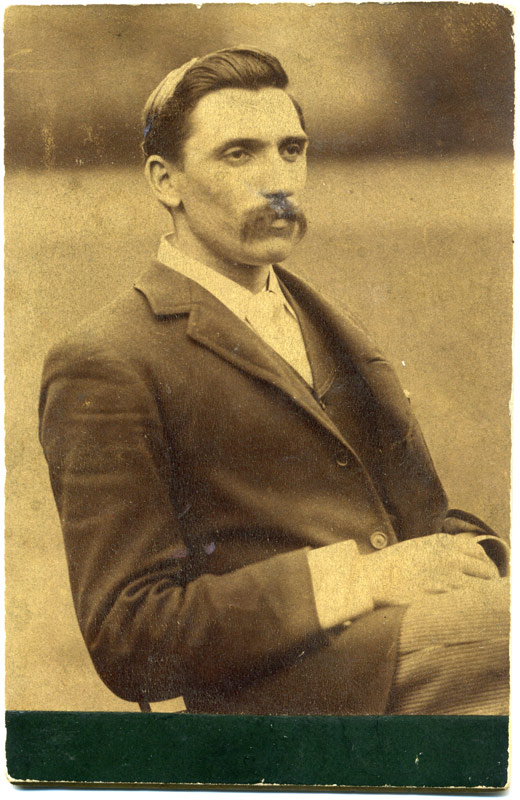
Science Museum Group © The Board of Trustees of the Science Museum
Born in 1864, Ferranti was a pioneer in electrics, power generation and electrical design. He also sported a fantastic moustache, which as we all know was a must for any discerning entrepreneur back in the day (for more on the propensity of pogonotrophy among scientists and engineers, check out this blog post from archivist Ceri Forster).
Ferranti didn’t start off as a local boy—he was born in Liverpool of all places! His Italian father, Cesar, was a photographer and his mother Juliana (née Scott) was a concert pianist. Sebastian was obsessed with engineering from a young age—he drew this locomotive in 1875 aged 11 and invented an arc light for street lighting at 13.
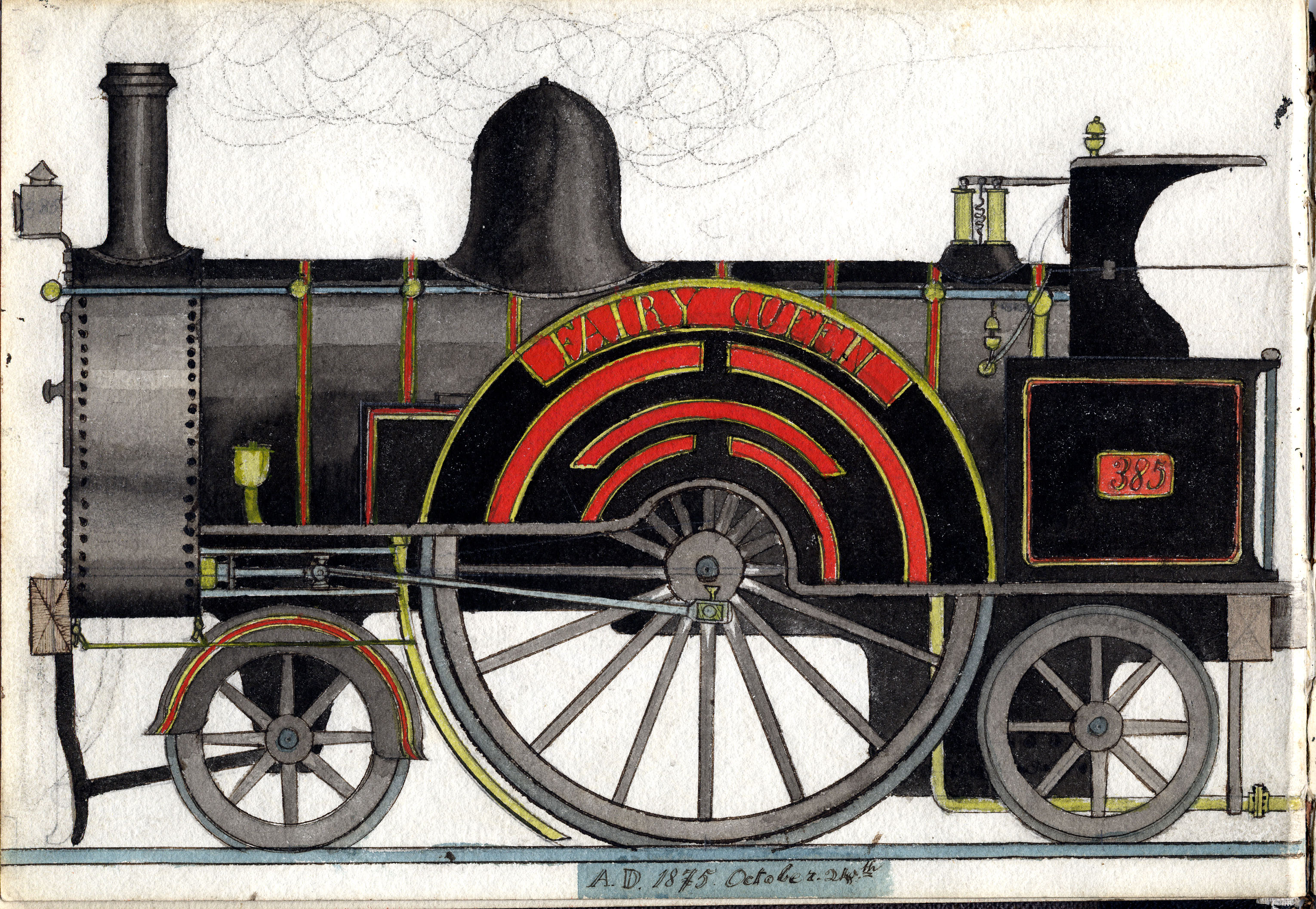
Science Museum Group © The Board of Trustees of the Science Museum
In 1885, he founded S. Z. Ferranti, renamed simply Ferranti in 1902, an electrical engineering and equipment firm that operated for over a century. Based in Hollinwood from 1896, the firm, at its peak, had 40 offices and factories. The company was a huge local employer, making everything from clocks to turbines and contributing to defence innovations during both world wars. Sebastian himself was President of the Institution of Electrical Engineers in 1910 and 1911, and was elected a Fellow of the Royal Society in 1927. He received an honorary doctorate from the University of Manchester in 1912.
We have lots of Ferranti related items in our collection, but three highlights can be seen on any visit—so why not follow in the Ferranti footsteps with this quick guide?
The Deptford Ferranti Columns, Lower Byrom Street
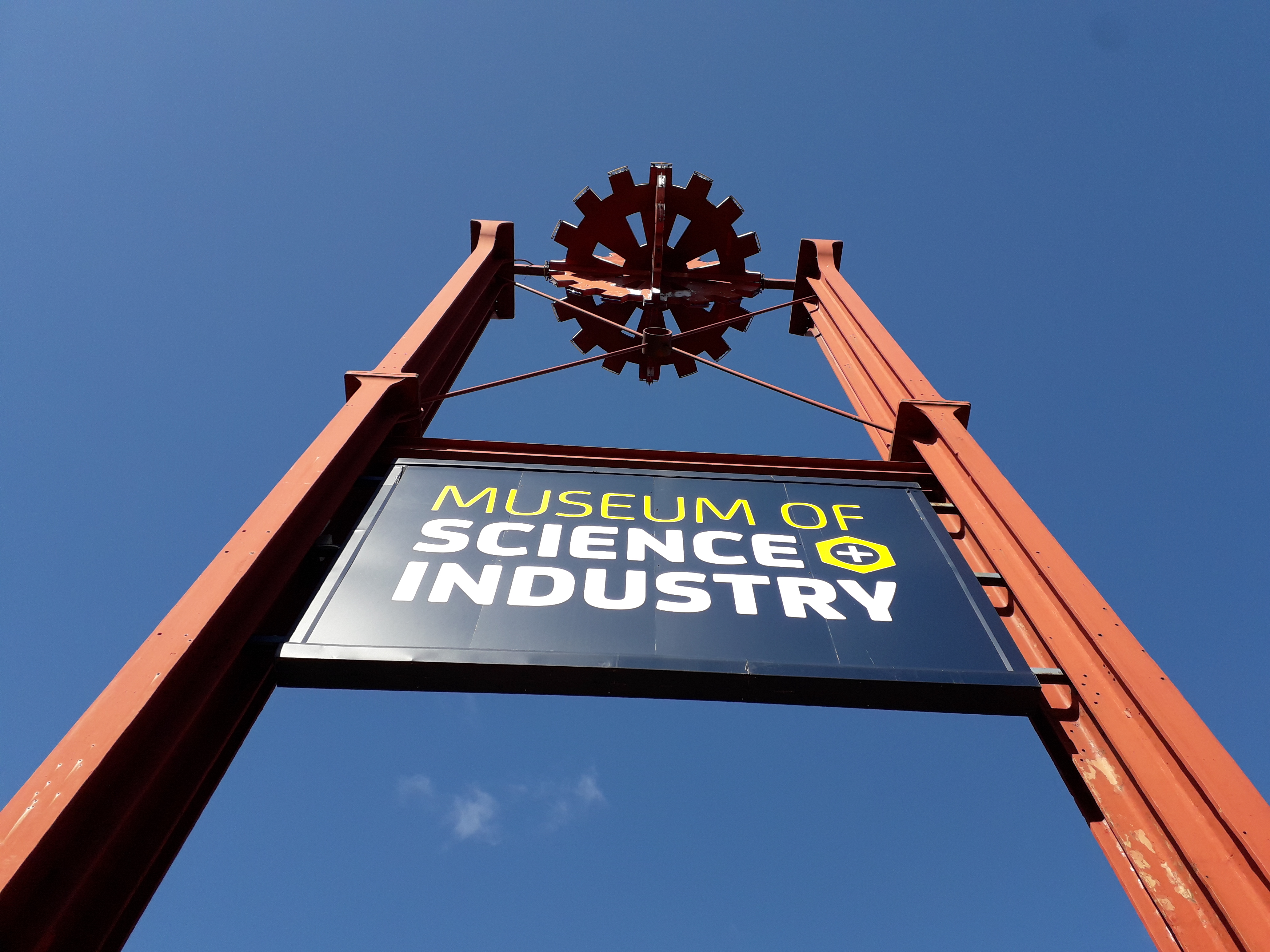
Science Museum Group © The Board of Trustees of the Science Museum
Did you know that before you even step through the door, you’ve already seen a bit of Ferranti? At the time, Sebastian was starting his company, the ‘war of the currents’ was raging, pitting the Direct Current system against alternating current.
Ferranti was an early champion of AC and had already been designing and making meters for this type. In 1887, the London Electric Supply Corporation (LESCo) hired him to design their power station at Deptford. He designed the building, the generating plant and the distribution system. It supplied high-voltage AC power at 10,000 volts, which was transformed to a lower voltage for consumer use where required.
On its completion in October 1890, it was the world’s first central power station. The columns that hold our sign are from that building – you can see them being used in the construction here:
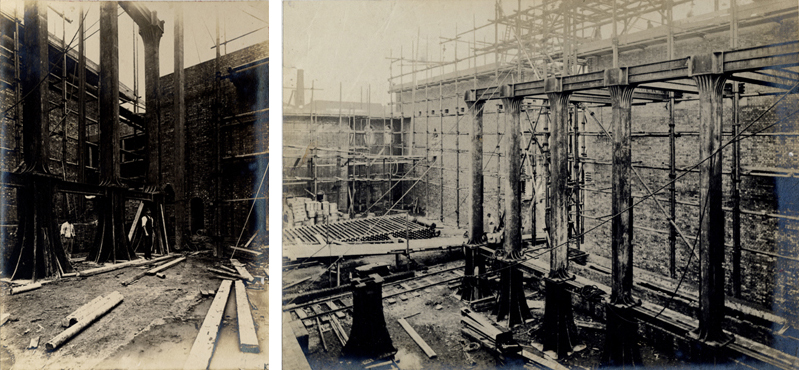
Science Museum Group © The Board of Trustees of the Science Museum
Ferranti Inverted Engine, Power Hall
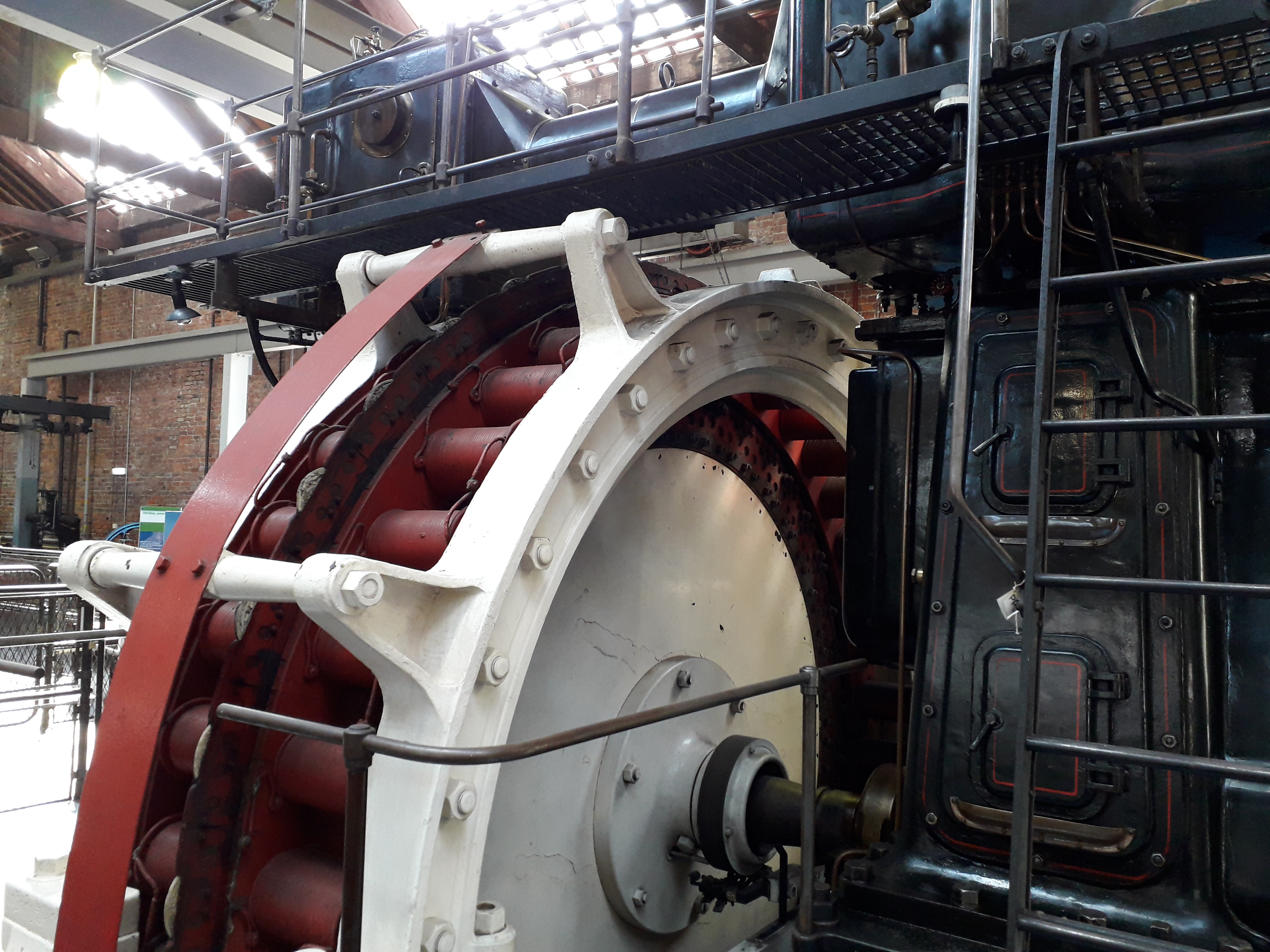
Science Museum Group © The Board of Trustees of the Science Museum
This is one of our stand-out engines in the Power Hall. Unlike most of the engines here that were used to drive machines in factories, this one was originally used to produce electricity (although it was later converted to drive cotton machinery).
Installed in Lambeth Power Station in 1900 to power street lighting, the engine was a very advanced design. It actually uses its steam twice, once for a high-pressure piston and once for its second low-pressure piston, and the engine was self-oiling, which meant it ran at a speedy 300 revolutions per minute, generating alternate current at 50 cycles per second (hz).
Although it no longer actually generates electric current, it is the last vertical, inverted, cross-compound, twin cylinder, twin piston steam-powered electricity generating engine still operating anywhere in the world. But possibly more importantly, our Explainers report that when the engine is running, its natural rhythm sounds like a samba beat! Cha, cha, cha!
The Ferranti Mark 1, Revolution Manchester
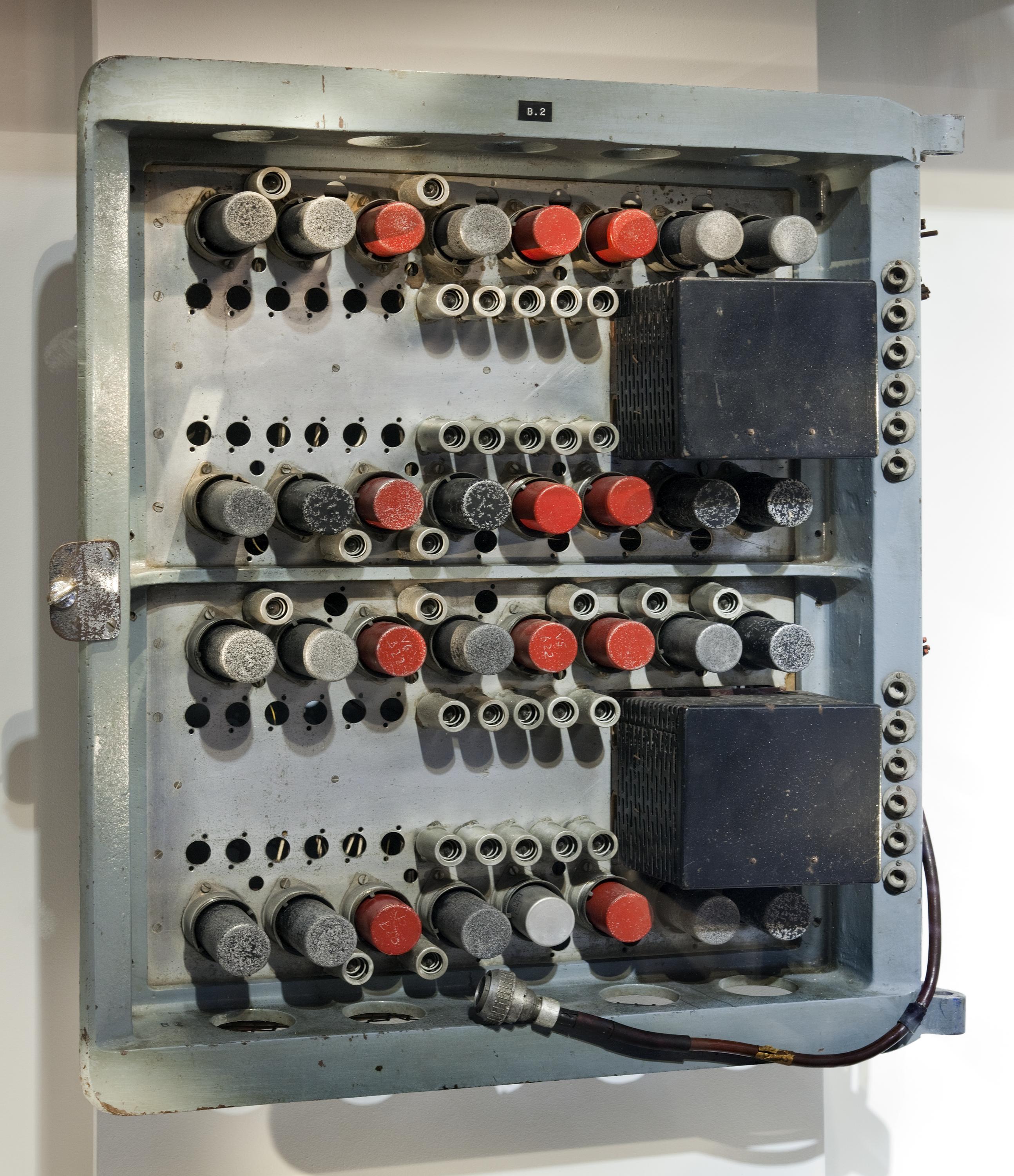
Science Museum Group © The Board of Trustees of the Science Museum
Sebastian Ziani de Ferranti died in 1930, but his work has had a long legacy both in the city and in electronics. His company became part of the pioneering computer development work going on in Manchester during the 40s and 50s.
After the University of Manchester had developed and successfully run Manchester Small-Scale Experimental Machine, better known as Baby (you can see a working replica of that in Revolution Manchester too), the Government funded Ferranti to work with the university and develop a version to sell.
The Ferranti Mark 1 became the world’s first commercial computer. This logic door in one of just seven parts from the original machine to survive. It contained more than 4,000 thermionic valves and six miles of wires on racks like this, taking up an entire room at the University.
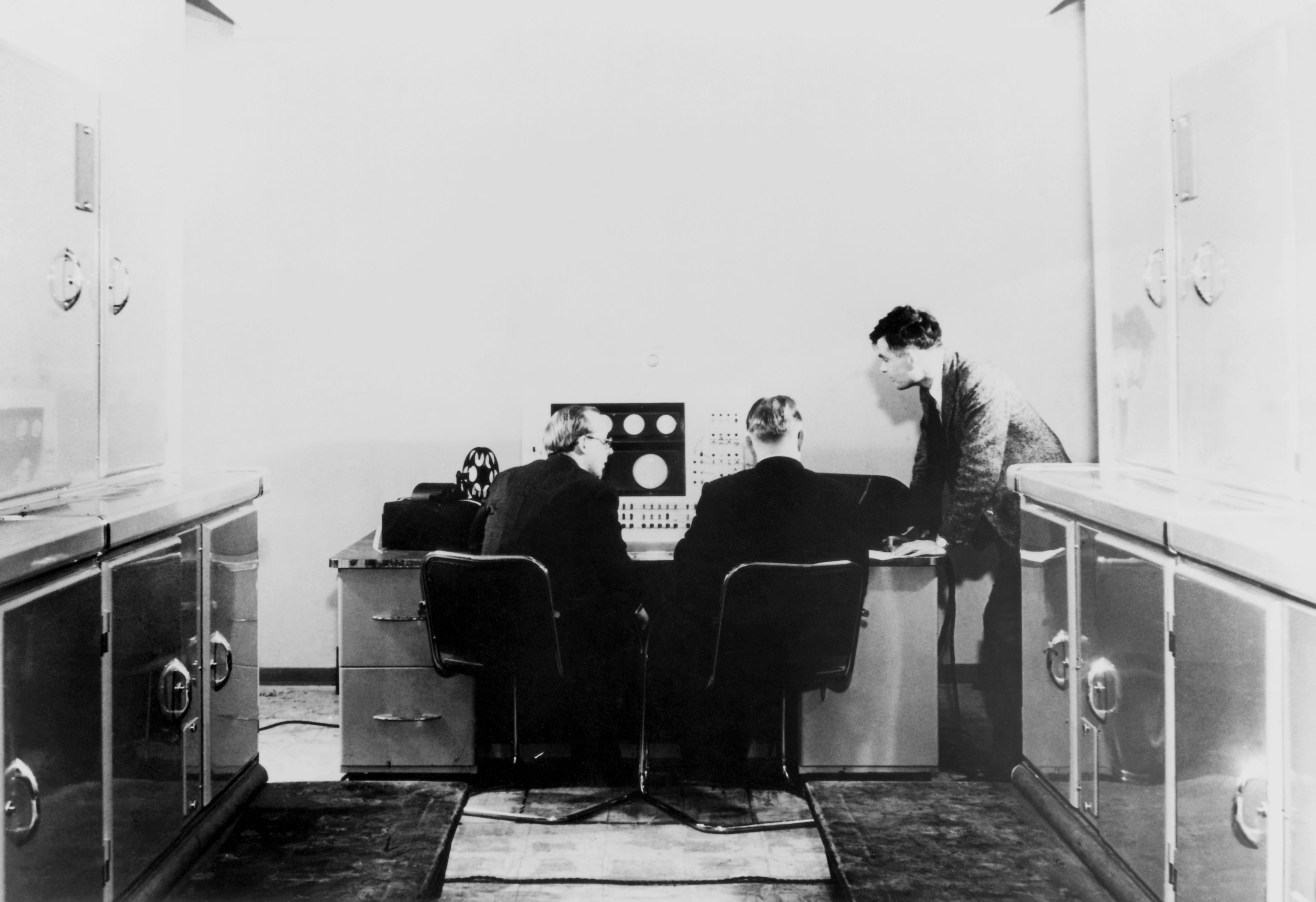
Science Museum Group © The Board of Trustees of the Science Museum
But it wasn’t all just number crunching for the Ferranti Mark 1. It was used to run the world’s first computer chess game, and Christopher Strachey, one of the programmers, developed a ‘love letter’ game and left romantic notes written by the computer around the offices.
He also programmed it to play a medley of “God Save the King”, “Baa Baa Black Sheep” and “In the Mood”, that were recorded by the BBC. More seriously, the Ferranti Mark 1 was an important step on the road to computers being part of everyday life across the world.
If these Ferranti highlights around the museum have ‘sparked’ (see what I did there?) your interest in the great man further, you could book in with our Collections Centre to see the company archive and some of Ferranti’s personal correspondence, sketchbooks, and family photographs. Look out for another blog on Ferranti in May, focussing on his work with alternating current, and may the power of the moustache be with you.
2 comments on “Follow Ferranti’s footsteps”
Comments are closed.
I’ve been shown two pics of a vintage electrical/electronic instrument which contains a Ferranti KD60 voltage regulating tube.
Please can you help me identify it and its use?
Fantastic information and great photos.
I’m doing ancestry research and checking out a family story that an ancestor was an inventor of sorts. The family story goes that my grandpa (his nephew) was present when some sort of message /a telegram was sent by Marconi. I haven’t yet seen evidence of this but It seems for once this ‘hearsay story’ is an understatement of the ‘inventiveness’. My great uncle married into the De Ferranti family! Wow. Many thanks for helping me with understanding the significance of what has gone before me! Sebastian’s father is my great great grandfather ….Cesar. If you do know of a link with Marconi, I would be very interested to hear about it. I admit I haven’t yet read everything I have discovered about Sebastian’s work. There’s so much there, so it may be sitting amongst the articles I have found waiting to be discovered.
Many thanks